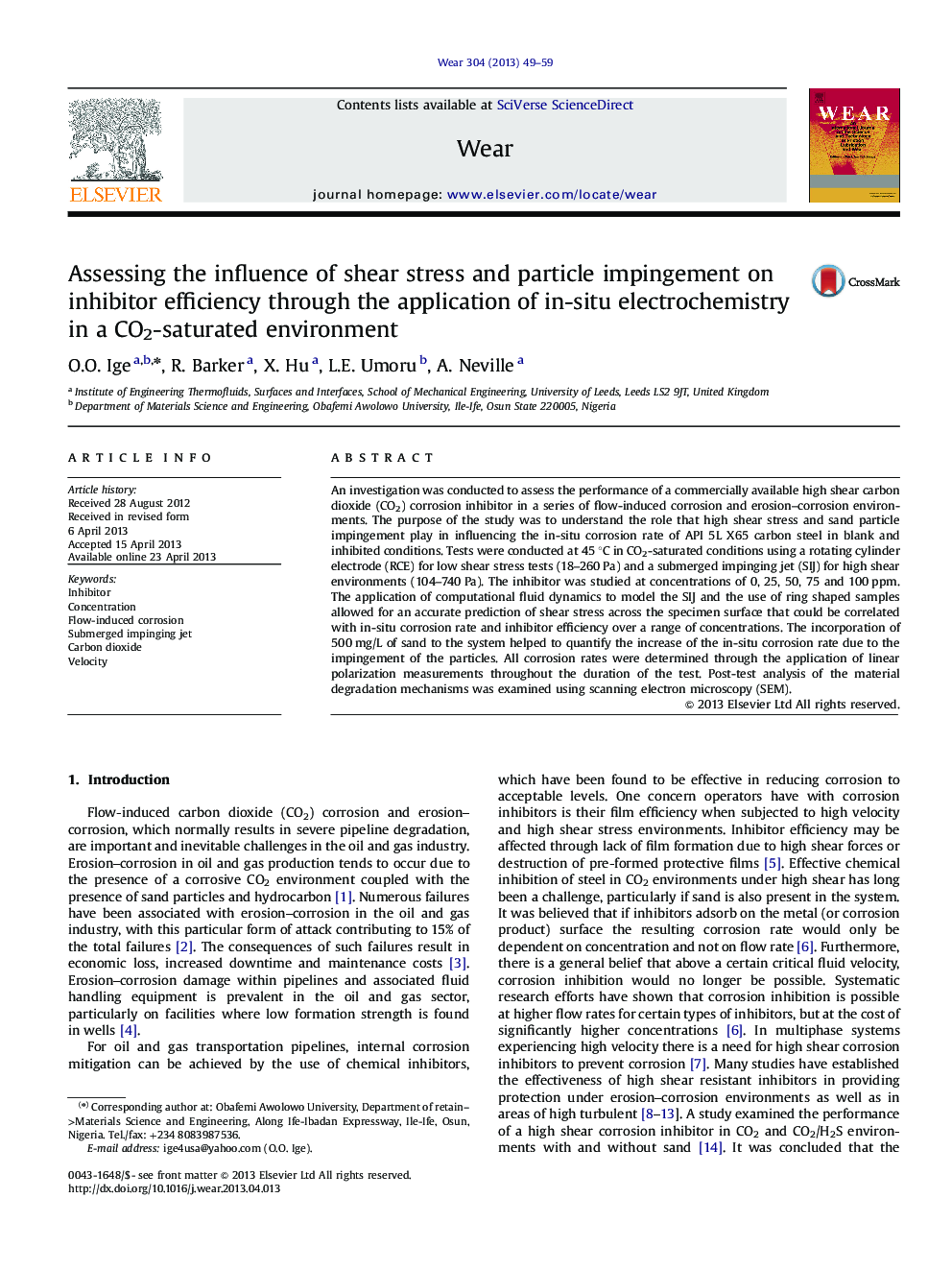| Article ID | Journal | Published Year | Pages | File Type |
|---|---|---|---|---|
| 7004733 | Wear | 2013 | 11 Pages |
Abstract
An investigation was conducted to assess the performance of a commercially available high shear carbon dioxide (CO2) corrosion inhibitor in a series of flow-induced corrosion and erosion-corrosion environments. The purpose of the study was to understand the role that high shear stress and sand particle impingement play in influencing the in-situ corrosion rate of API 5L X65 carbon steel in blank and inhibited conditions. Tests were conducted at 45 °C in CO2-saturated conditions using a rotating cylinder electrode (RCE) for low shear stress tests (18-260 Pa) and a submerged impinging jet (SIJ) for high shear environments (104-740 Pa). The inhibitor was studied at concentrations of 0, 25, 50, 75 and 100 ppm. The application of computational fluid dynamics to model the SIJ and the use of ring shaped samples allowed for an accurate prediction of shear stress across the specimen surface that could be correlated with in-situ corrosion rate and inhibitor efficiency over a range of concentrations. The incorporation of 500 mg/L of sand to the system helped to quantify the increase of the in-situ corrosion rate due to the impingement of the particles. All corrosion rates were determined through the application of linear polarization measurements throughout the duration of the test. Post-test analysis of the material degradation mechanisms was examined using scanning electron microscopy (SEM).
Related Topics
Physical Sciences and Engineering
Chemical Engineering
Colloid and Surface Chemistry
Authors
O.O. Ige, R. Barker, X. Hu, L.E. Umoru, A. Neville,
